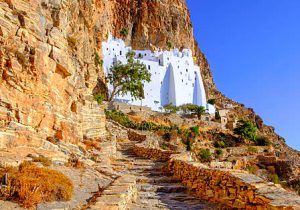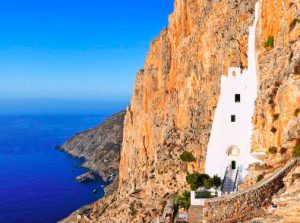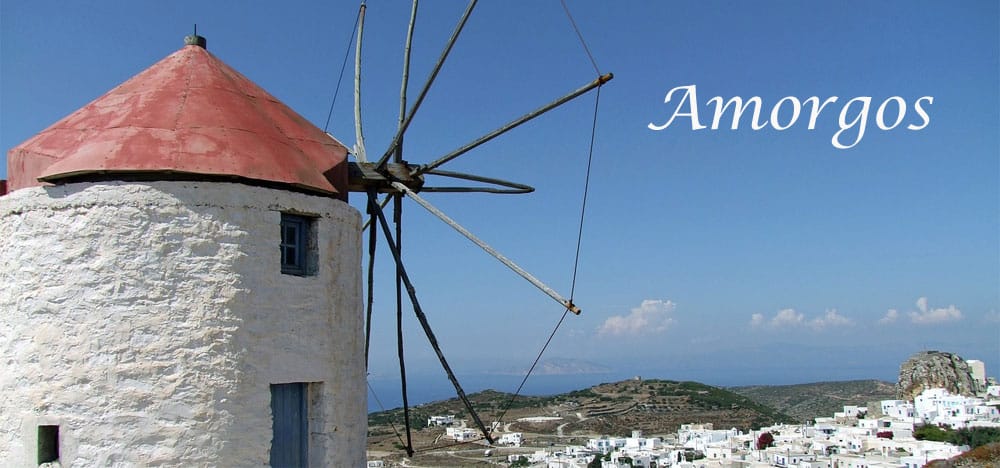Monastery of Hozoviotissa essential information

A perfect blend of nature and the beauty of human creation, the monastery symbolizes man’s dedication to the Virgin Mary, where the icon is carried every year to all the villages of the island. It is undoubtedly the pride of Amorgos, with its pristine walls lined with portraits of monks and other leaders, the smell of incense and numerous small treasures.
Hanging on the side of the cliff 300 meters above the sea the monastery of Chozoviotissa offers a stunning view of the sparkling blue waters of the Aegean Sea. The monastery was created as an ode (poem) to the Grace of Virgin Mary, known as Panagia, who is the patron saint of the island. The Monastery of Hozoviotissa is a masterpiece of medieval architecture.

The monks, who act as guardians of this architectural wonder, serving baked raki (local liqueur) and Turkish delight. The current external appearance of the monastery is the result of various changes that occurred over time. The building is 40 meters high and 5 meters wide has 8 floors that are developed to a greater width using functional rock wall recesses.
The Monastery of Chozoviotissa is a remarkable testament to the enduring spiritual and architectural legacy of the Byzantine Empire. Its remote location, breathtaking views, and historical significance make it a must-visit destination for those exploring the island of Amorgos.
There is an internal labyrinth with the church, the cells and the various auxiliary spaces forming a whole that with ingenuity and utility meets the needs of the monastic brotherhood. Guests are asked to dress decently, men should wear trousers and women should wear long skirts. The Monastery celebrates on 21st of November.
Design and Layout
The monastery’s design is simple and austere, reflecting the ascetic lifestyle of the monks who reside there. The main entrance leads to a small courtyard, from where visitors can access the various levels and rooms. The monastery comprises six floors, with each floor serving a different purpose. The lower levels contain storage rooms and workshops, while the upper levels house the living quarters, chapels, and the treasury.
Museum and Treasury
The Monastery of Chozoviotissa has a small museum that displays a collection of religious artifacts, icons, and manuscripts. These items provide insights into the rich religious and cultural heritage of the monastery. The treasury also holds valuable religious relics, including precious icons and liturgical objects.
Spiritual Significance
The Monastery of Chozoviotissa holds great spiritual significance for the Orthodox Christian community. It is considered one of the most important monastic sites in the Aegean region. The monks who reside in the monastery lead a secluded and contemplative life, dedicated to prayer and worship. The monastery attracts numerous pilgrims and tourists who seek spiritual solace and admire the architectural marvel.
Visiting the Monastery
Visitors can reach the Monastery of Chozoviotissa by climbing a long and steep path from the village of Hora or by boat. As you approach the monastery, you will be greeted by breathtaking panoramic views of the Aegean Sea. Modest attire is required to enter the monastery, with both men and women expected to cover their shoulders and wear long skirts or pants.
Cultural Impact
The monastery gained significant recognition after it was featured in the 1988 film “The Big Blue” directed by Luc Besson. This exposure contributed to an increase in tourism and interest in Amorgos as a travel destination.
